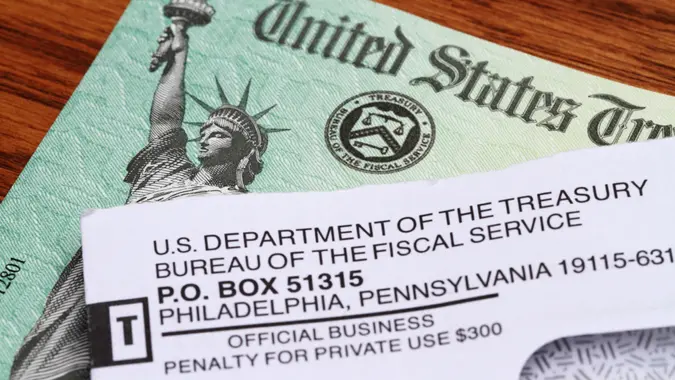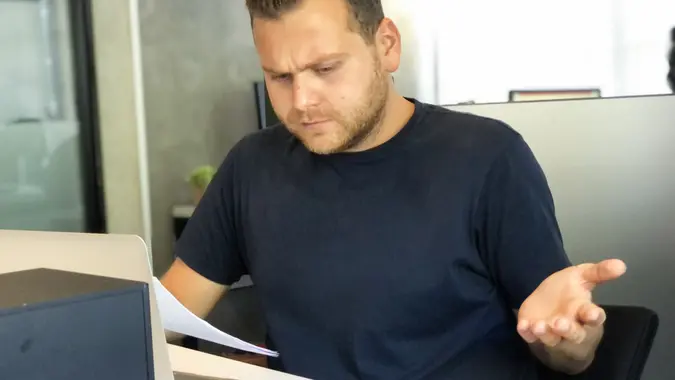Economists Warn Stagflation Is Coming for the US Economy — What Is It and Is It Really Any Worse Than a Recession?

Commitment to Our Readers
GOBankingRates' editorial team is committed to bringing you unbiased reviews and information. We use data-driven methodologies to evaluate financial products and services - our reviews and ratings are not influenced by advertisers. You can read more about our editorial guidelines and our products and services review methodology.

20 Years
Helping You Live Richer

Reviewed
by Experts

Trusted by
Millions of Readers
While the U.S. economy has shown resilience despite inflation and increasing rates, the latest U.S. gross domestic product growth (GDP) data shows signs of cooling down. Indeed, the annualized GDP slowed to 1.1%, the Bureau of Economic Analysis (BEA) reported last week. This was well below economists’ consensus of 1.9%, according to Fortune.
In addition, the personal consumption expenditures (PCE) index, increased to 4.2%, higher than the 3.7% economists had expected, Fortune added.
The “data was the worst of both worlds, with growth down (GDP +1.1% down from 2.6% and less than the 1.9% expected) and inflation up (Core PCE up to 4.9% from 4.4% and higher than the 4.7% expected),” noted Chris Zaccarelli, Chief Investment Officer for Independent Advisor Alliance. “The job market and consumer spending have held up remarkably well despite the Fed raising interest rates as high and as fast as they have and so far that doesn’t seem to be falling apart, but the economy is slowing and inflation is not anywhere near the Fed’s target of 2%.”
Now, after months of talks of a looming recession, several experts are warning of a potential stagflation- slow growth, persistent inflation and a rise in unemployment–according to Morgan Stanley.
“While inflationary pressures continue to ease, the trajectory is still not moving quickly enough for the Federal Reserve to declare victory,” said Quincy Krosby, chief global strategist for LPL Financial.
“Financial markets continue to doubt Jerome Powell’s resolve in restoring price stability despite his steadfast position that the Fed must not allow 1970s style stagflation take hold with pauses between rate hikes,” added Krosby.
As Statista notes, slowing growth is generally accepted as a necessary evil to bring down inflation. Slow growth combined with stubborn inflation- as it is the case currently- prompts fears of stagflation, which “is widely considered one of the worst conditions for an economy to be in, as it limits the instruments available to policy makers. Measures that fight slow growth and unemployment tend to fan inflation, while measures taken to cool inflation stifle economic activity and ultimately lead to unemployment.”
More From GOBankingRates
 Written by
Written by  Edited by
Edited by 

























